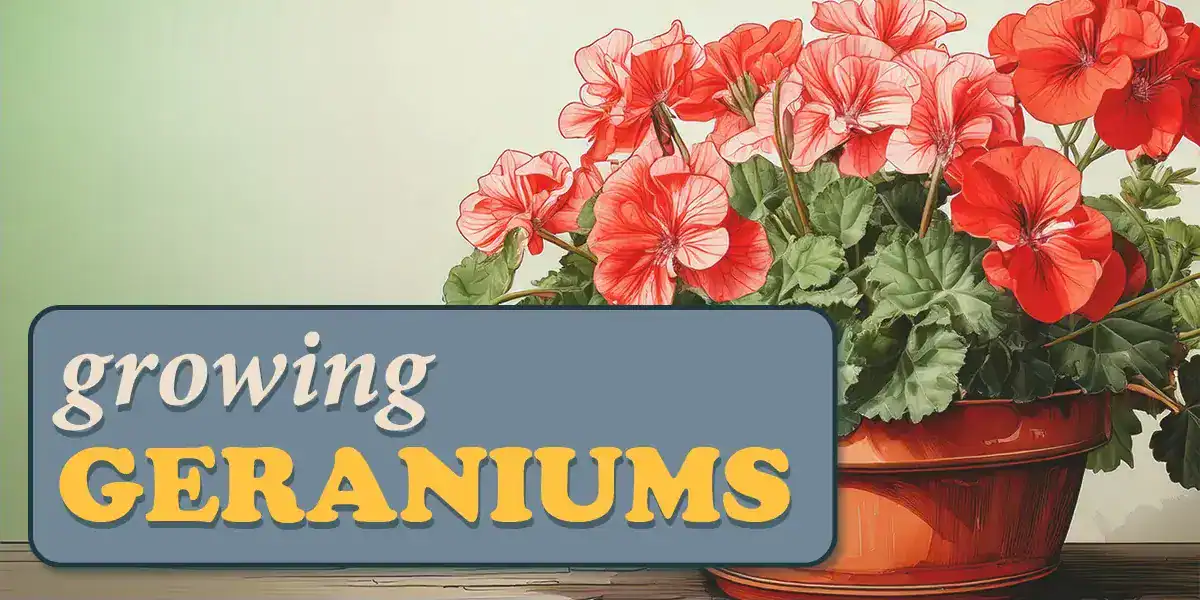Did you know the vibrant “geraniums” that fill garden beds across Southern California aren’t geraniums at all? They belong to the genus Pelargonium, originating in Southern Africa.
True geraniums, or “cranesbills,” are a hardier group from temperate regions. Both genera get their names from the shape of their seed pods, which resemble bird beaks — pelargos (stork) and géranos (crane) in Greek.
This case of mistaken botanical identity doesn’t make Pelargoniums any less beloved.
They thrive in sunny climates and bloom for months in SoCal. In mild, frost-free areas, they can be grown as perennials. In cooler inland spots, they’re usually treated as annuals.
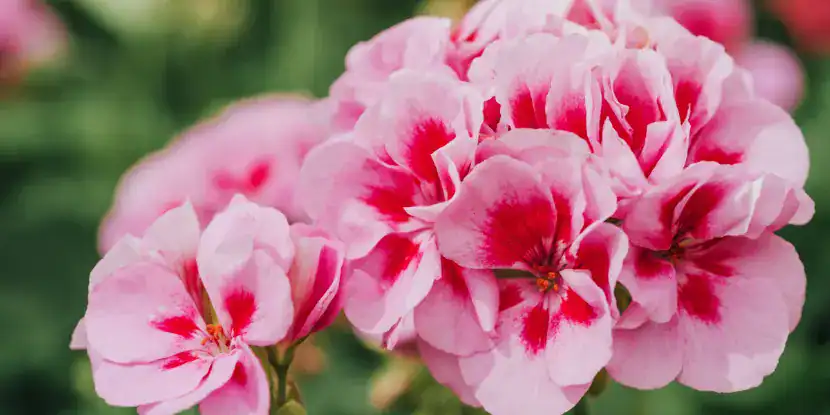
A close-up gorgeous pink and red geraniums.
Best Varieties for Southern California
You’ll want plants bred for heat tolerance and continuous blooming. Look for stocky, vigorous plants with healthy leaves.
- Caliente® is an exceptionally heat-tolerant hybrid mixing the traits of ivy and zonal geraniums. It’s suitable for garden beds, containers, and hanging baskets.
- Americana® is known for its wide range of colors and robust high-temperature performance.
- Bullseye™ is a heat-tolerant annual with striking foliage and vibrant blooms.
- Angeleyes has shown surprising durability in extreme summer heat trials.
Optimal Growing Conditions
Light
- Geraniums need at least six hours of direct sunlight daily.
- In the hottest areas, a spot with morning sun and light afternoon shade is ideal to protect leaves from scorching.
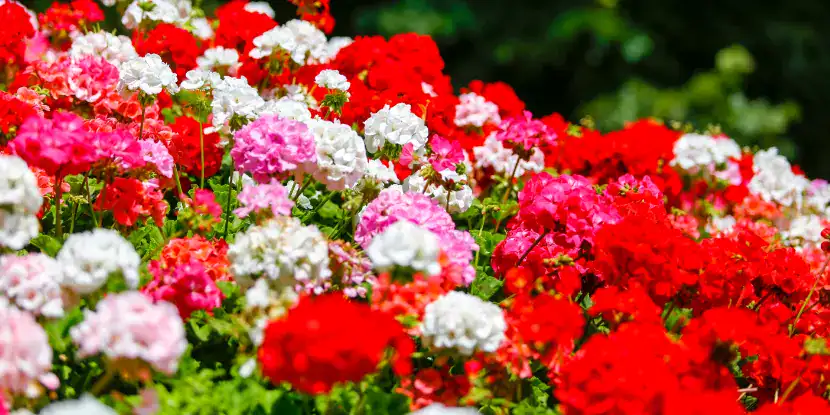
Clusters of geranium blossoms in the garden.
Temperature
- Most common geraniums will be damaged or killed by freezing temperatures.
- In mild coastal areas, they can grow as perennials year-round.
- In inland valleys with cooler winters, you may need to bring them indoors or treat them as annuals.
Soil
Good drainage is essential to prevent root rot.
- In garden beds: Amend heavy clay soil with compost or perlite to improve drainage. Planting in raised beds also helps.
- In containers: Use a high-quality, well-draining potting mix.
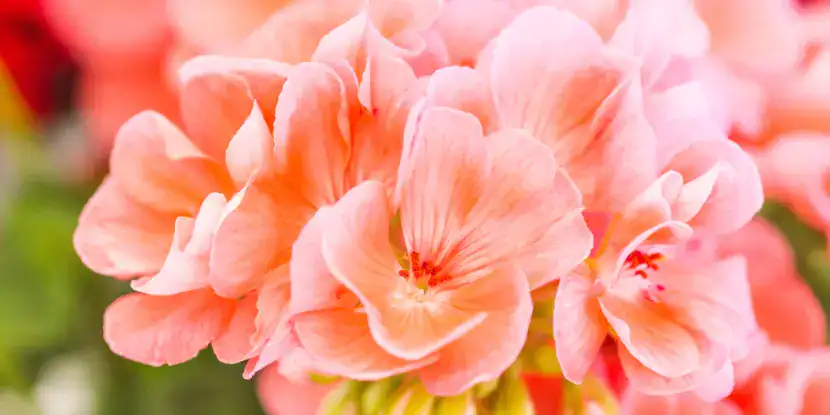
Delicate cream-colored geranium flowers.
Propagating Geraniums
From Seed
Growing geraniums from seed requires patience, as it takes a few months to get a flowering plant.
- Start seeds indoors 8–10 weeks before the last expected frost date.
- Fill a seed tray with a sterile, moist seed-starting mix. Press one seed into the surface of each cell, but do not cover it with soil, as they need light to germinate.
- Cover the tray with a plastic dome to retain humidity and place it in a warm, bright location. Germination typically takes 1–4 weeks.
- Once seedlings emerge, remove the plastic cover and place the tray under grow lights or in a sunny window. Keep the soil consistently moist, but not soggy.
- When the seedlings have two sets of true leaves, transplant them into individual pots.
From Cuttings
Propagating from cuttings is faster and ensures the new plant is identical to the parent. The best time to take cuttings is late summer or early fall.
- Use a clean, sharp knife to cut a 4- to 6-inch section from the tip of a healthy stem. Choose a stem that is green and flexible, not woody.
- Remove the leaves from the bottom half of the cutting, leaving just 2–3 leaves at the top.
- You can root the cutting in either water or soil.
- Water: Place the cutting in a jar of water, ensuring no leaves are submerged. Change the water every few days. Roots should appear in 2–4 weeks.
- Soil: Dip the cut end in rooting hormone powder and plant it in a small pot filled with moist potting mix. Cover the pot with a plastic bag to create a mini-greenhouse.
- Once the cutting has a healthy root system, you can transplant it into a larger pot or the garden.
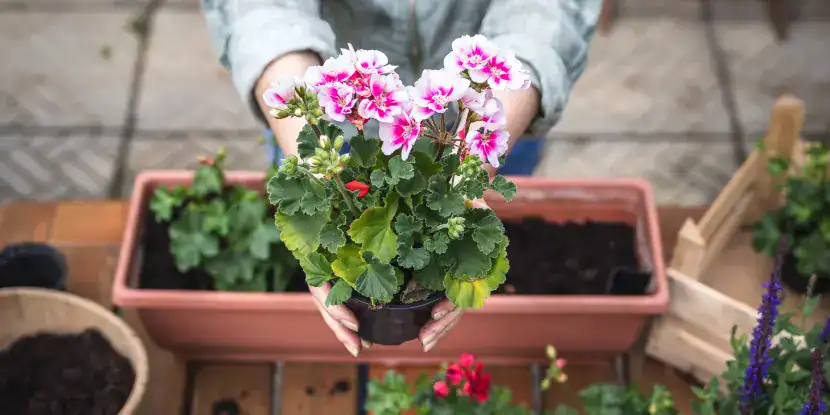
A woman transplants a geranium into a bigger container.
Steps for Planting
- If your plants grew indoors, gradually increase their time outside for a week to acclimate them to outdoor conditions.
- Dig a hole as deep and slightly wider than the plant’s root ball.
- Gently remove the plant from its container and place it in the hole. The top of the root ball should be level with the surrounding soil.
- Fill in the hole with soil, gently firming it around the roots. Water thoroughly.
Caring for Geraniums
Once established, geraniums are low-maintenance plants. A little attention goes a long way.
Water
- Water deeply, but allow the soil to dry out slightly between waterings.
- In summer, container-grown plants may need daily watering.
- Avoid overhead watering, which can lead to fungal diseases.
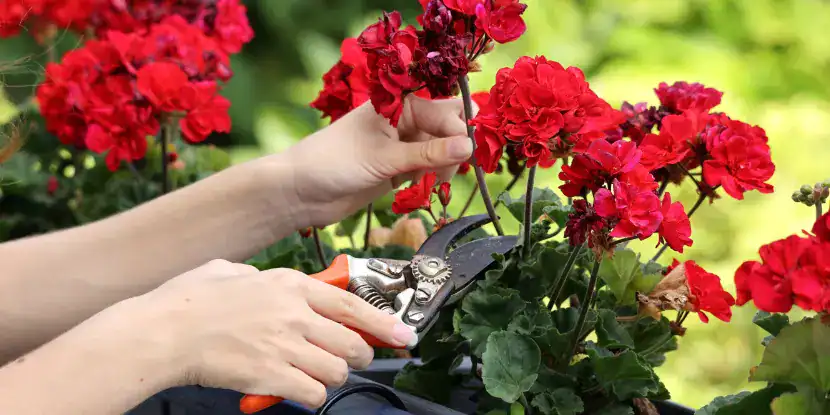
Pruning and deadheading your geraniums will keep them blooming all season.
Fertilizer
- Feed your geraniums every 2–3 weeks during the growing season with a balanced fertilizer.
- Avoid getting fertilizer on the leaves or stems, which can cause burning.
- Avoid high-nitrogen fertilizers, which promote leafy growth at the expense of flowers.
Pests & Diseases
- Common pests include aphids, whiteflies, and spider mites. Control these with insecticidal soap.
- The biggest disease threat is root rot from overwatering. Ensure good drainage and let the soil dry out to prevent this.
Pruning & Deadheading
- Regularly remove spent blooms (deadheading) to encourage the plant to produce more flowers.
- If your plants become leggy, you can prune them back by about a third in mid-season to promote bushier growth.
Growing Geraniums in Pots
- Choose a pot with good drainage and fill it with well-draining potting mix.
- Place the geranium in the center of the pot and add more soil around it, gently pressing down to remove any air pockets.
- Water thoroughly after planting and keep the soil consistently moist but not waterlogged.
- Move pots to a protected area if extreme heat or a surprise frost is in the forecast.
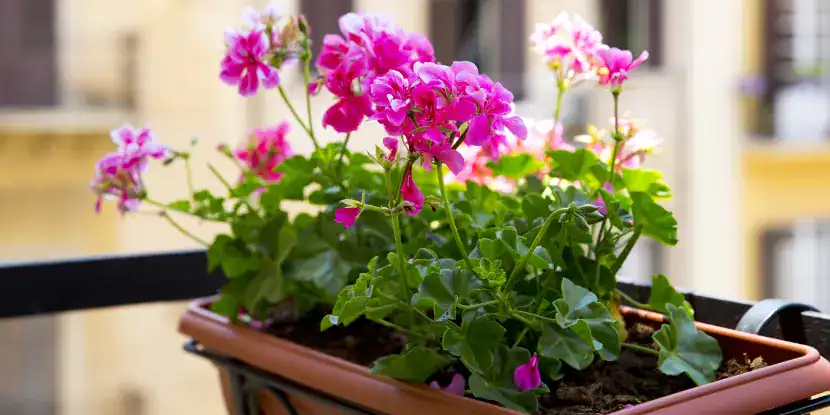
A potted geranium grows on a balcony.
Overwintering Geraniums
In Southern California, geraniums can survive outdoors year-round if protected from extreme temperatures. However, overwintering them indoors will ensure their health and longevity.
- Before the first frost, carefully dig up your geraniums from the ground or move potted plants indoors.
- Trim back any long stems and remove damaged leaves or flowers.
- Place them in a cool, bright location, like a sunny window or under grow lights.
- Water sparingly during winter and allow the soil to dry out slightly between waterings.
- In early spring, gradually increase watering and fertilizer to encourage new growth.
- Once all risk of frost has passed, gradually acclimate your geraniums to the outdoors.
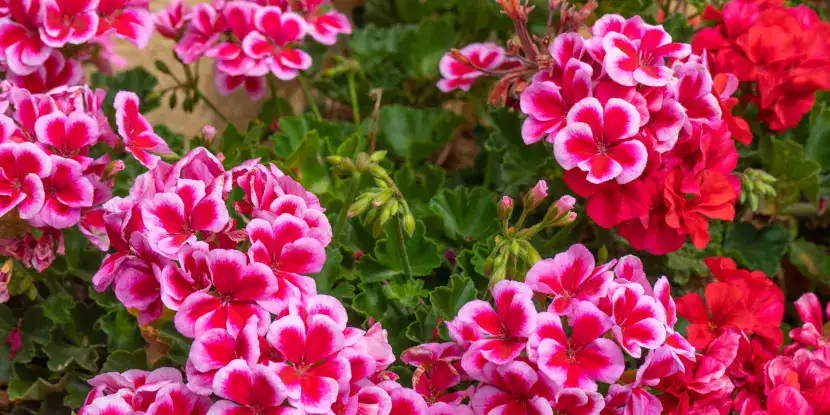
Pink and red geraniums in a garden bed.
FAQs: Growing Geraniums
Q: Are geraniums annuals or perennials in Southern California?
Geraniums can be grown as short-lived perennials in mild, frost-free areas of Southern California (like coastal zones). In colder inland areas where frost occurs, they’re typically treated as annuals or brought indoors for the winter.
Q: Why are my geraniums not blooming?
The most common reasons are insufficient light or too much nitrogen fertilizer. Ensure your plants get at least six hours of direct sun daily and use a balanced fertilizer. Extreme heat can also cause them to temporarily stop flowering, a condition known as “heat check.”
Q: How often should I water my geraniums?
Water deeply when the top inch of soil feels dry. Container plants in hot, sunny spots may need daily watering, while ground plants may only need watering once or twice a week.
Q: Is it better to grow geraniums from seed or cuttings?
Propagating from cuttings is faster and creates an exact clone of the parent plant. Growing from seed takes longer (8-10 weeks to get a seedling ready for transplanting), and the resulting plants may have slight variations.
Q: Are geraniums toxic to pets?
Pelargonium species are mildly toxic to cats, dogs, and horses. Ingesting the plant can cause vomiting and lethargy. Keep them out of reach of curious pets.
Q: How do I make my geraniums bushy?
Pinch back the growing tips of young plants. You can prune older, leggy plants back by about one-third in the middle of the growing season. Regular deadheading also promotes new growth and more flowers.
Q: What are the best geranium varieties for hot climates?
Look for heat-tolerant series like Caliente, Americana, and Bullseye. These have been bred to perform well in high summer temperatures and will continue to bloom when other varieties struggle.

